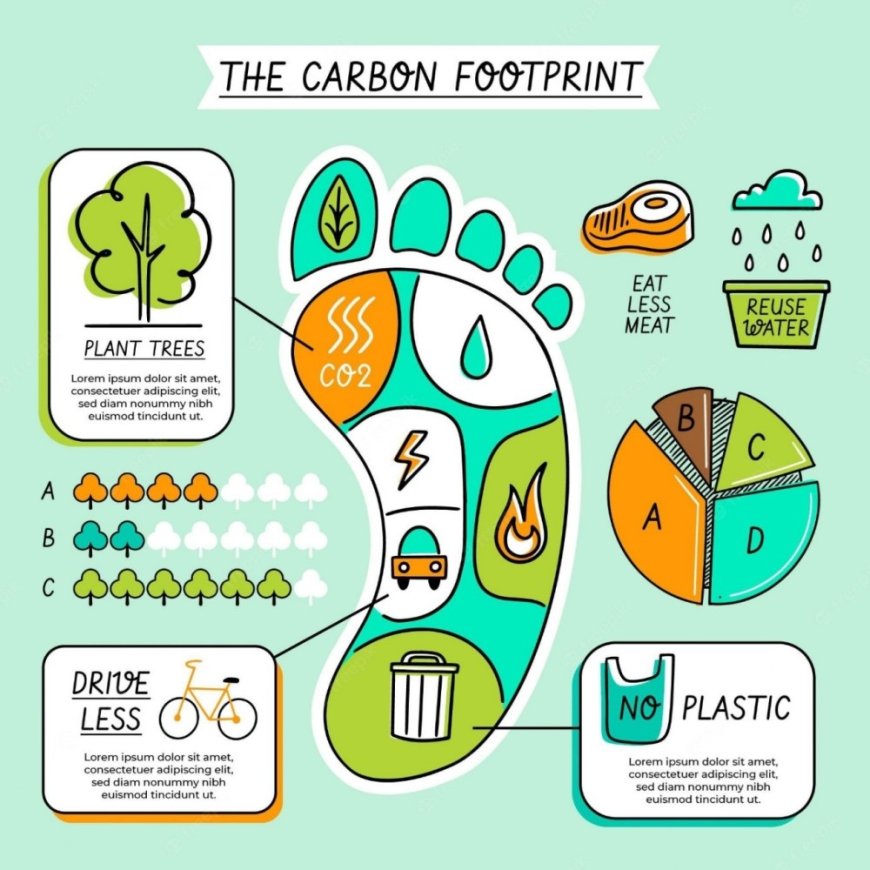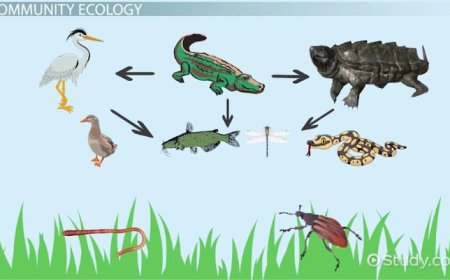10 Simple Ways to Reduce Your Carbon Footprint and Fight Climate Change
Learn 10 simple yet impactful ways to reduce your carbon footprint and contribute to a healthier planet. Discover how energy-efficient appliances, renewable energy, waste reduction, and sustainable habits can help combat climate change.

Introduction
In the fight against climate change, reducing your carbon footprint is a crucial step toward a sustainable future. A carbon footprint measures the total greenhouse gases (GHGs) you produce directly or indirectly through daily activities. From energy consumption to dietary choices, nearly every aspect of our lives impacts the environment. Thankfully, small, actionable steps can collectively create a significant difference. This article explores 10 simple yet effective ways to reduce your carbon footprint and positively impact the planet.
What is a Carbon Footprint?
Definition and Importance
A carbon footprint is the total amount of greenhouse gases, primarily carbon dioxide (CO2), emitted due to individual, organizational, or industrial activities. It encompasses emissions from transportation, electricity consumption, food production, and various other daily processes. Understanding and reducing our carbon footprint is essential in mitigating climate change and fostering sustainability.
How Carbon Footprints Impact the Environment
Excessive carbon emissions contribute to global warming, leading to rising temperatures, melting glaciers, extreme weather events, and biodiversity loss. By taking proactive measures to minimize these emissions, individuals and businesses can help reduce environmental damage, conserve natural resources, and promote a healthier planet for future generations.
Why Reducing Your Carbon Footprint Matters
Environmental Benefits
- Slows global warming and reduces extreme weather conditions
- Improves air and water quality
- Protects ecosystems and biodiversity
Health and Economic Impacts
- Reducing emissions leads to cleaner air, which lowers respiratory illnesses and related healthcare costs
- Energy-efficient practices cut down household and business utility bills, leading to long-term savings
Key Facts About Carbon Footprints
| Fact | Details |
|---|---|
| Average Carbon Footprint Per Person | The global average is about 4 tons per year, but in developed countries like the U.S., it can exceed 16 tons per person. |
| Major Sources of Carbon Emissions | Transportation (29%), electricity production (25%), industry (23%), agriculture (10%), and residential & commercial (13%). |
| Impact of a Plant-Based Diet | Switching to a plant-based diet can reduce an individual's carbon footprint by up to 50%. |
| Benefits of Renewable Energy | Solar and wind energy can reduce household emissions by up to 90% compared to fossil fuels. |
| Waste Reduction Potential | Recycling just one ton of paper saves 17 trees and reduces emissions equivalent to removing one car from the road for six months. |
| Effect of Carpooling | Carpooling with one other person can cut transportation emissions by 50%. |
| Plastic Pollution | Over 8 million tons of plastic enter the ocean annually, contributing to carbon emissions from waste management. |
10 Simple Ways to Reduce Your Carbon Footprint
1. Opt for Energy-Efficient Appliances
Upgrading to energy-efficient appliances reduces energy consumption and lowers utility bills. Look for appliances with the ENERGY STAR label, which ensures maximum efficiency. Though the initial cost may be higher, these appliances provide significant long-term savings.
2. Embrace Renewable Energy Sources
Switching to renewable energy sources like solar, wind, or hydropower decreases reliance on fossil fuels. Many governments offer incentives for adopting renewable energy, making it an affordable and sustainable option for homes and businesses.
3. Reduce, Reuse, Recycle
The 3R principle minimizes waste and conserves resources:
- Reduce single-use plastics and unnecessary consumption.
- Reuse materials such as shopping bags and glass containers.
- Recycle paper, metal, and plastic to decrease landfill waste.
- Composting organic waste further cuts down emissions from landfill decomposition.
4. Drive Less and Use Public Transport
Transportation is a significant contributor to carbon emissions. Consider carpooling, cycling, or using public transportation to reduce your footprint. If feasible, investing in an electric vehicle (EV) is another effective way to lower emissions.
5. Adopt a Plant-Based Diet
Livestock farming generates methane, a potent greenhouse gas. Reducing meat and dairy consumption, even by one or two meals per week, can make a difference. Plant-based diets require fewer resources and contribute to a lower environmental impact.
6. Conserve Water
Water conservation helps reduce the energy needed for purification and distribution. Simple steps include:
- Fixing leaks promptly
- Installing water-efficient fixtures
- Turning off the tap while brushing your teeth
- Using rainwater for irrigation
7. Support Sustainable Brands
Choose businesses that prioritize ethical and sustainable practices. Look for Fair Trade, organic, or eco-friendly certifications when purchasing products. Supporting sustainable brands encourages more companies to adopt green initiatives.
8. Plant Trees and Promote Urban Greenery
Trees absorb CO2 and release oxygen, making them essential in combating climate change. Participate in tree-planting programs or grow plants in your home and community spaces to improve air quality and support biodiversity.
9. Minimize Single-Use Plastics
Plastic production emits substantial greenhouse gases and contributes to ocean pollution. Reduce plastic waste by using reusable bags, bottles, straws, and containers instead of disposable alternatives.
10. Educate Yourself and Others
Awareness is a powerful tool. Share knowledge about climate-friendly practices with family and friends, and participate in local climate initiatives. Advocacy and collective action play a crucial role in driving policy changes and promoting sustainability.
Challenges in Reducing Carbon Footprints
Financial and Social Barriers
- High Initial Costs: Some sustainable solutions, such as solar panels or electric vehicles, require significant upfront investments.
- Cultural Habits: Social norms and lifestyles may resist changes like plant-based diets or reduced air travel.
Solutions and Innovations
- Governments and businesses must work together to make sustainable alternatives more affordable.
- Advances in technology, such as affordable renewable energy solutions and carbon offset programs, help overcome these challenges.
Conclusion
Reducing your carbon footprint doesn’t require drastic lifestyle changes. By adopting these 10 simple yet impactful strategies, you contribute to a more sustainable world. Small individual actions, when multiplied across millions, create a global movement toward sustainability. Start today, and inspire others to do the same.
Frequently Asked Questions (FAQs)
1. What are 10 ways to stop climate change?
- Switch to Renewable Energy – Use solar, wind, or hydro energy instead of fossil fuels.
- Improve Energy Efficiency – Use energy-saving appliances and LED bulbs.
- Adopt Sustainable Transportation – Walk, bike, use public transport, or drive electric vehicles.
- Reduce Waste – Recycle, compost, and minimize plastic use.
- Conserve Water – Fix leaks, use water-efficient appliances, and reduce water waste.
- Support Reforestation – Plant trees and protect forests.
- Eat Sustainably – Reduce meat consumption and eat local, organic foods.
- Advocate for Climate Policies – Support government policies addressing climate change.
- Educate and Raise Awareness – Share knowledge and encourage sustainable actions.
- Invest in Green Technologies – Support innovations in carbon capture and sustainable solutions.
2. What are 5 ways we can reduce our carbon footprint?
- Use Energy Wisely – Switch off lights and appliances when not in use.
- Drive Less – Walk, bike, or use public transport.
- Eat a Plant-Based Diet – Reduce meat consumption.
- Minimize Waste – Reuse, recycle, and compost.
- Shop Sustainably – Buy local, eco-friendly products.
3. What are 5 ways to fight climate change?
- Support Renewable Energy – Choose clean energy sources.
- Reduce Deforestation – Plant trees and support conservation.
- Conserve Water and Energy – Reduce consumption and waste.
- Advocate for Change – Support policies promoting sustainability.
- Educate Others – Spread awareness about climate change impacts and solutions.
4. How to reduce carbon footprint as a student?
- Use Public Transport or Bike to School – Reduce fossil fuel consumption.
- Bring Reusable Items – Use a refillable bottle and lunchbox.
- Reduce Paper Waste – Use digital notes and print less.
- Participate in Green Projects – Join environmental clubs.
- Save Energy at Home – Turn off unnecessary lights and electronics.
5. What are 10 ways to reduce pollution?
- Reduce Plastic Use – Carry reusable bags and bottles.
- Use Public Transport – Reduce vehicle emissions.
- Avoid Littering – Dispose of waste properly.
- Recycle and Compost – Minimize landfill waste.
- Use Eco-Friendly Products – Choose biodegradable items.
- Plant Trees – Absorb pollutants and purify the air.
- Reduce Industrial Waste – Advocate for sustainable production.
- Control Chemical Use – Avoid pesticides and toxic cleaning agents.
- Improve Sewage Systems – Prevent water pollution.
- Raise Awareness – Educate communities about pollution control.
6. How to fight climate change as a student?
- Be an Advocate – Educate peers on climate issues.
- Engage in Tree-Planting – Help absorb CO2.
- Reduce Single-Use Plastics – Carry reusable items.
- Conserve Energy – Use electricity wisely.
- Join Eco-Friendly Campaigns – Support climate action initiatives.
7. How can we save our environment (20 points)?
- Reduce plastic use.
- Conserve water.
- Save electricity.
- Use renewable energy.
- Avoid deforestation.
- Plant trees.
- Drive less.
- Support green businesses.
- Reduce, reuse, recycle.
- Avoid single-use plastics.
- Protect wildlife.
- Eat sustainably.
- Reduce food waste.
- Use eco-friendly products.
- Dispose of waste properly.
- Support environmental policies.
- Reduce industrial pollution.
- Use public transport.
- Reduce chemical use.
- Spread awareness.
8. What are 5 examples of climate change solutions?
- Renewable energy use.
- Reforestation.
- Energy efficiency.
- Sustainable agriculture.
- Carbon capture technology.
9. What are the 10 causes of climate change?
- Burning fossil fuels.
- Deforestation.
- Industrial emissions.
- Agriculture and livestock.
- Waste and landfill emissions.
- Overpopulation.
- Transportation emissions.
- Urbanization.
- Plastic pollution.
- Ocean acidification.
10. What are five natural causes of climate change?
- Volcanic eruptions.
- Solar radiation changes.
- Ocean currents.
- Earth’s orbit shifts.
- Natural greenhouse gas emissions.
11. What are the 10 major effects of climate change?
- Rising global temperatures.
- Melting glaciers and ice caps.
- Rising sea levels.
- Extreme weather events.
- Increased droughts.
- Ocean acidification.
- Loss of biodiversity.
- Decline in food security.
- Health risks.
- Economic damage.
12. What do you mean by carbon footprint?
A carbon footprint is the total greenhouse gas emissions produced directly or indirectly by an individual, organization, event, or product.
13. How do I reduce my carbon footprint?
- Use renewable energy.
- Drive less.
- Eat a plant-based diet.
- Conserve water and electricity.
- Reduce, reuse, and recycle.
14. How can we stop global climate change?
- Switch to green energy.
- Reduce carbon emissions.
- Increase reforestation.
- Promote sustainability policies.
- Reduce waste.
15. What are 5 steps to reduce climate change?
- Reduce fossil fuel consumption.
- Improve energy efficiency.
- Promote green transport.
- Support carbon taxes.
- Advocate for sustainability.
16. How to reduce global warming in 10 points?
- Use clean energy.
- Reduce car emissions.
- Save electricity.
- Eat sustainably.
- Reduce waste.
- Conserve water.
- Plant trees.
- Support eco-policies.
- Minimize plastic use.
- Educate others.
17. How to protect yourself from climate change?
- Stay informed.
- Prepare for disasters.
- Reduce exposure to air pollution.
- Use sustainable products.
- Conserve resources.
18. How can we prevent climate change at home?
- Use energy-efficient appliances.
- Reduce water waste.
- Compost and recycle.
- Use public transport.
- Grow plants and trees.
19. What can I do to help climate change?
- Reduce energy consumption.
- Plant trees.
- Use reusable products.
- Educate others.
- Support climate action.
20. What are 3 things we can do to decrease climate change?
- Switch to renewable energy.
- Reduce waste and pollution.
- Conserve natural resources.
21. What is the carbon footprint in food?
It refers to greenhouse gas emissions from food production, transportation, and waste.
22. How can you protect the environment as a student?
- Save energy and water.
- Reduce waste.
- Use sustainable products.
- Join eco-friendly initiatives.
- Educate peers about environmental conservation.
23. What are the five effects of climate change?
-
- Rising temperatures.
- Droughts.
- Extreme weather.
- Melting ice caps.
- Biodiversity loss.









































